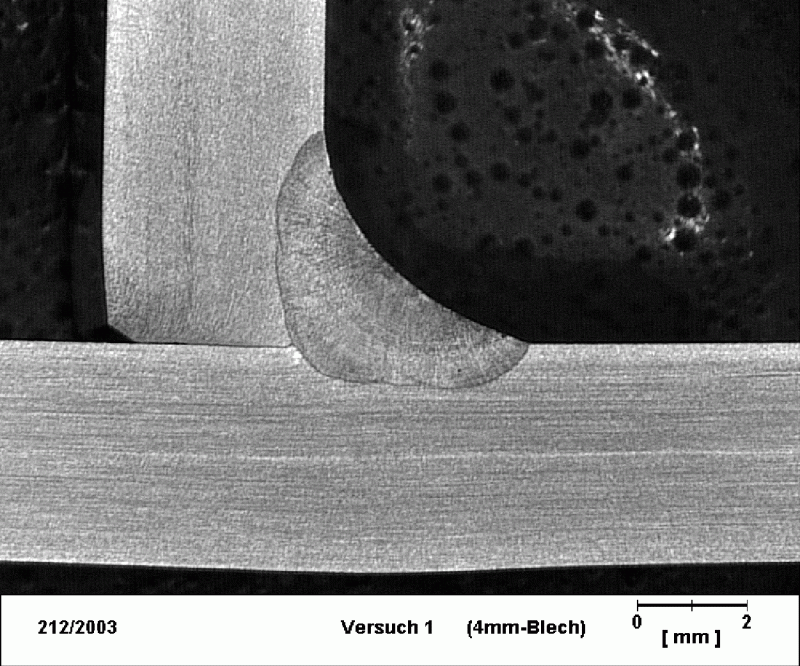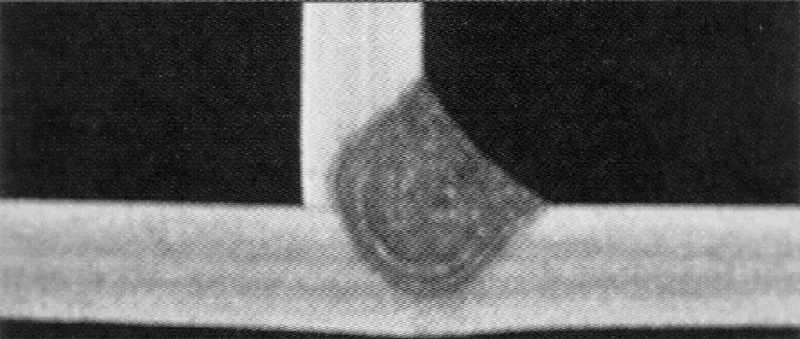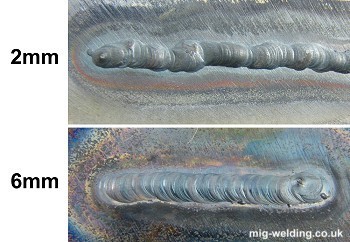projectwelder
Member
- Messages
- 41
- Location
- Flintshire. North Wales.
Watching this thread. Very useful information as I'm doing tig in college also. Only difference is 3mm material. 30 amps per mm of steel is very handy to know . Thanks. 


I've made what looked (IMHO) like a very nice weaved bead and I cut it in half, ground it, sanded it, polished it and finally etched it with citric acid to see the penetration. The etch came out very well but the penetration was really naff, probably more to my technique than the fact it was weaved. It would be cool if someone on here who is good at tig would etch a weld and post pics for us to compare.You quite often find the penetration profile isn't that great
The penetration of the weave type Tig weld is not really the issue with it as it's usually use when filling or capping a thicker section joint. If it was etched in this case I'm sure it would come out ok.I've made what looked (IMHO) like a very nice weaved bead and I cut it in half, ground it, sanded it, polished it and finally etched it with citric acid to see the penetration. The etch came out very well but the penetration was really naff, probably more to my technique than the fact it was weaved. It would be cool if someone on here who is good at tig would etch a weld and post pics for us to compare.
I've made what looked (IMHO) like a very nice weaved bead and I cut it in half, ground it, sanded it, polished it and finally etched it with citric acid to see the penetration. The etch came out very well but the penetration was really naff, probably more to my technique than the fact it was weaved. It would be cool if someone on here who is good at tig would etch a weld and post pics for us to compare.








I would never teach or recommend anyone to learn on 8mm material, you wouldn't normally use tig by choice, that would fall into mig or stick territory, 2 to 3 mm is what we recommend in the tutorial, 8mm is just making hard hot work of it and is likely beyond the capacity of most welding sets found in diy workshops.When I bought all my gear I bought 6 metres of 40x8mm flat, cut it into roughly 100mm lengths and practised fillet, butt and inside & outside corner joint configurations. According to the Tig welding page on here, thick material is much easier to learn on, hence 8mm but I think it would be a good idea to get a length of 3mm flat aswell, to learn slightly thinner (although, as tig welding goes, 3mm is still reasonably thick).
I'm well aware that it's way too thick for Tig but the picture in the Tig tutorial made me start thick to learn the basics such as torch angle, travel speed, going straight, feeding filler, etc without having to worry about burning through. They were very weak joints that would break under my weight but I feel it really helped me.I would never teach or recommend anyone to learn on 8mm material, you wouldn't normally use tig by choice, that would fall into mig or stick territory, 2 to 3 mm is what we recommend in the tutorial, 8mm is just making hard hot work of it and is likely beyond the capacity of most welding sets found in diy workshops.

[/QUOTE]I'm well aware that it's way too thick for Tig but the picture in the Tig tutorial made me start thick to learn the basics such as torch angle, travel speed, going straight, feeding filler, etc without having to worry about burning through. They were very weak joints that would break under my weight but I feel it really helped me.

[QUOTE
The two welds in the photo on the right were made by a beginner TIG welder. In the first photo the welder was struggling to control the weld pool, and was having trouble adding the filler rod.
The second weld was made immediately afterwards with no further training. The only difference is the thickness of the steel (and the amps adjusted to suit). The increased thickness means the weld pool is larger and easier to control, which makes it much easier to add the filler rod.
]



My first question is why are running 2 beads and then capping it ???
I think he is learning and seeking advice,No answer ???




